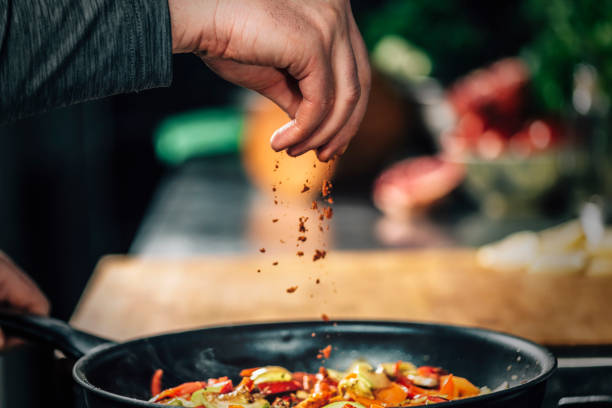Snack culture shifts: portable meals for changing lifestyles
Daily routines are fragmenting as hybrid work, commuting patterns, and travel habits change, pushing portable meals from occasional convenience into a deliberate culinary category. This teaser outlines how convenience, nutrition, and environmental concerns converge to shape new snack formats that resonate with modern schedules and values.

As more people juggle flexible schedules, remote meetings, and varied travel, portable meals are evolving beyond simple convenience items into thoughtfully composed bites. Consumers and producers are balancing practicality with sustainability, aiming for snacks that deliver satisfying texture and flavor while minimizing environmental impact. This article examines key influences such as sustainable sourcing, fermentation, plant-based choices, traceability, and design strategies like upcycling and zero-waste packaging that shape the modern portable meal.
How does sustainability shape portable meals?
Sustainable practices influence ingredient selection, packaging, and supply chains for on-the-go foods. Brands increasingly promote plant-based proteins and whole-grain components to reduce lifecycle emissions, and zero-waste approaches—such as compostable wraps or refill systems for snacks—are gaining traction. Sustainable design also considers shelf life and cold-chain requirements, favoring formulations that remain safe and appealing without heavy refrigeration. Shoppers often weigh environmental credentials alongside convenience and cost, prompting clearer communication about sourcing and production impacts.
What does fermentation add to snacks?
Fermentation brings both preservation and distinctive flavor to portable meals. Fermented items like kimchi-style slaws, miso spreads, and cultured nut cheeses contribute complexity, natural acidity, and potential probiotic profiles that can improve shelf stability when processed correctly. Fermentation also offers an avenue for upcycling by transforming byproducts—whey, spent grains, or vegetable trimmings—into flavorful inclusions. For consumers, fermented elements can make compact meals feel curated and texturally interesting, providing tang and umami that pair well with neutral grains and crisps.
How do plant-based and non-alcoholic options fit?
Plant-based snacks respond to dietary preferences and environmental concerns, offering versatile bases from legumes, seeds, and fermented soy. These ingredients provide protein and fiber while allowing varied textures—from crunchy seed bars to creamy legume dips. Non-alcoholic beverages such as kombucha, botanical sodas, or zero-proof blends complement savory and sweet snack pairings without storage or regulatory complications tied to alcohol. Together, plant-based foods and non-alcoholic drinks expand portable combinations for commuters, parents, and travelers seeking balanced nutrition and enjoyable flavor profiles.
Why is traceability important for portable foods?
Traceability reassures buyers about ingredient origins and production practices, which matters for ethical and environmental accountability. Clear labeling about source farms, seasonal harvests, and processing steps helps consumers make informed choices, particularly when heritage ingredients or specialty seasonings are used. Traceability also supports small producers who can highlight direct farm relationships and traditional practices, linking portable meals to stories of stewardship. This transparency can influence purchasing decisions as much as taste, especially among consumers prioritizing provenance and supply-chain ethics.
How do flavor, texture, and seasoning create satisfaction?
Careful attention to flavor, texture, and seasoning determines whether a portable meal feels complete. Successful snacks combine contrasting textures—crisp crackers with creamy spreads, or roasted vegetables with crunchy grains—to maintain interest during travel or transit. Thoughtful seasoning and balanced acidity prevent monotony, while pairing strategies match beverage profiles to snack elements, such as tart kombucha with salty-fermented bites. Natural umami sources, spice blends, and acidifiers often replace heavy additives, ensuring taste longevity and reducing reliance on refrigeration.
How do heritage and upcycling influence design?
Culinary heritage inspires modern portable formats by translating traditional preservation methods—drying, curing, or lacto-fermentation—into snackable portions that carry cultural context. Upcycling transforms surplus ingredients into value-added components, such as crackers made from spent grains or fruit leather from imperfect produce, supporting zero-waste goals. Respecting heritage means adapting age-old techniques into safe, scalable processes that retain distinctive seasoning and texture. This fusion of past and present can make portable meals feel meaningful as well as practical.
Portable meals today reflect priorities beyond mere convenience: they are platforms for sustainable sourcing, transparent traceability, and sensory design that suits mobile lifestyles. By integrating fermentation, plant-based nutrition, non-alcoholic pairings, and upcycling strategies, snack creators can offer diverse textures, layered flavor, and ethical credentials without sacrificing portability. As consumer expectations shift, on-the-go food continues to adapt, combining heritage techniques and modern packaging to meet changing tastes and values.
This article is for informational purposes only and should not be considered medical advice. Please consult a qualified healthcare professional for personalized guidance and treatment.
Portable meal trends suggest ongoing refinement in formulations and packaging, with attention to seasonality, resource use, and cultural context shaping future innovations.





